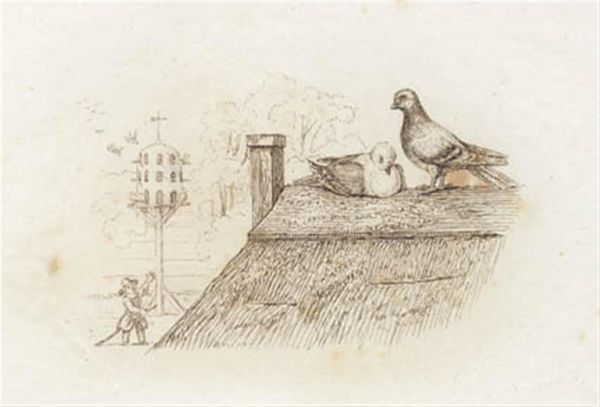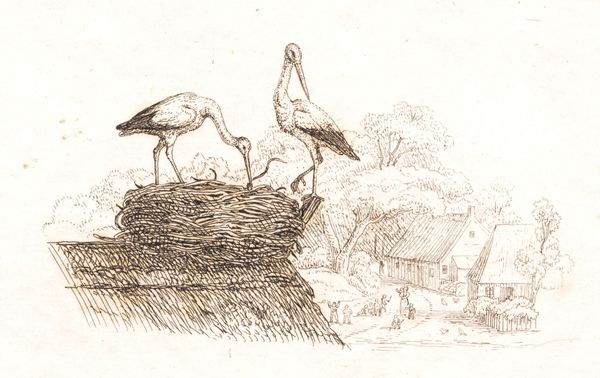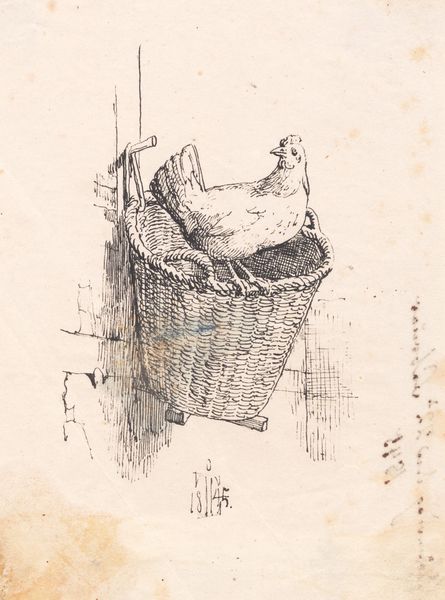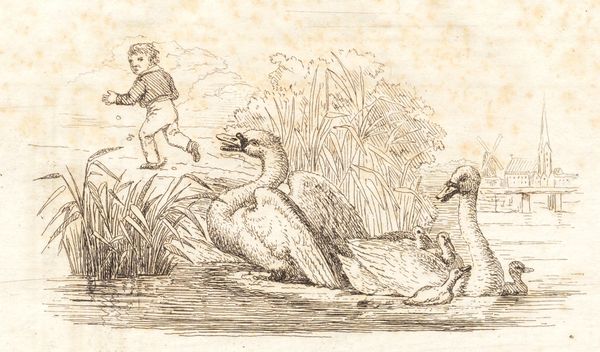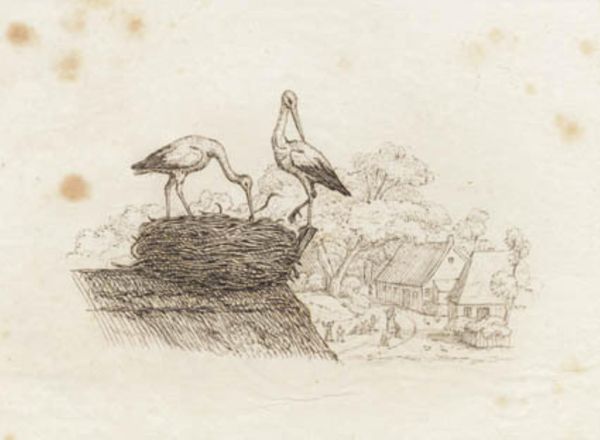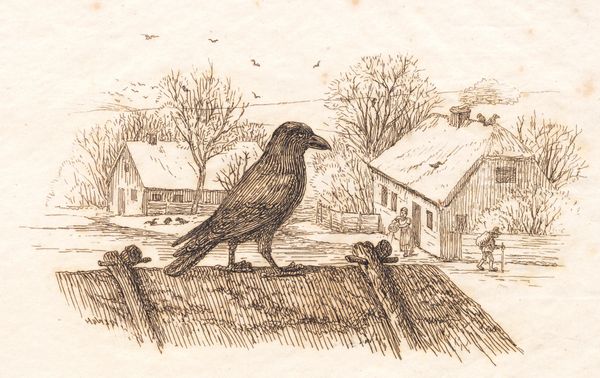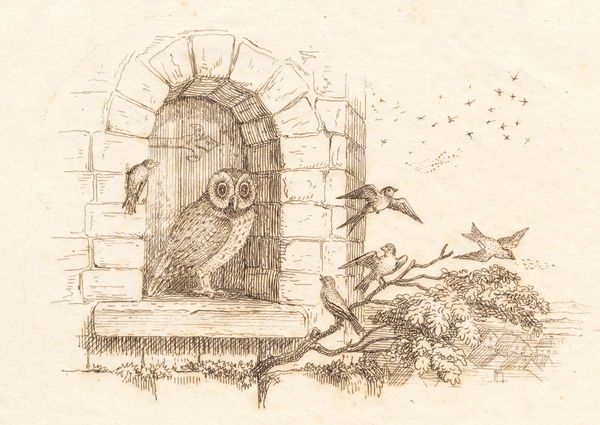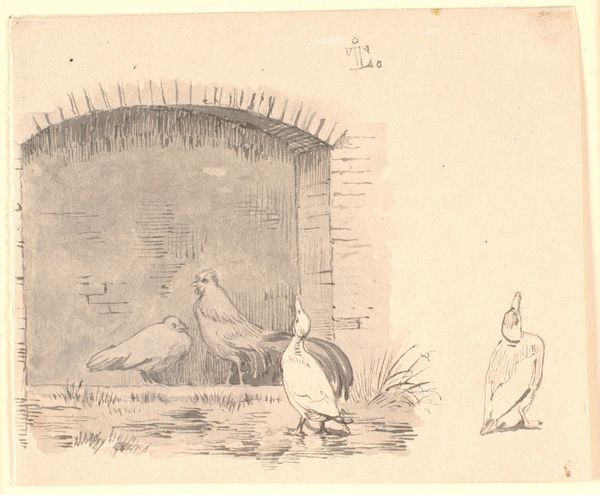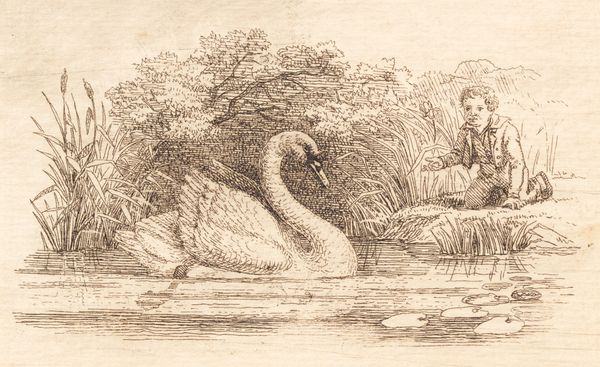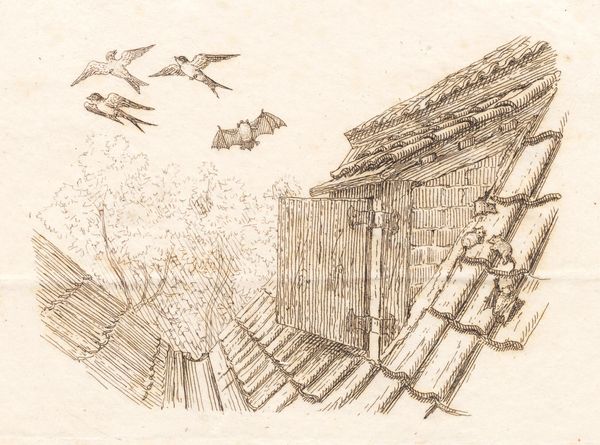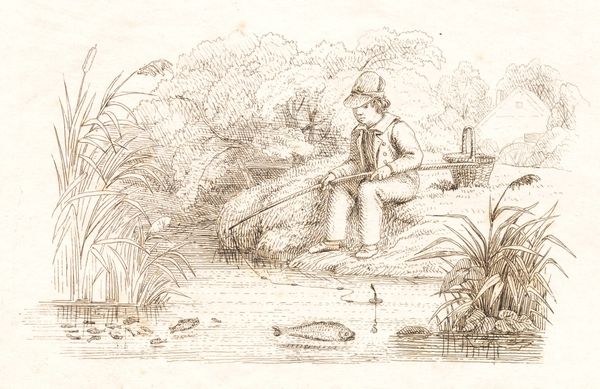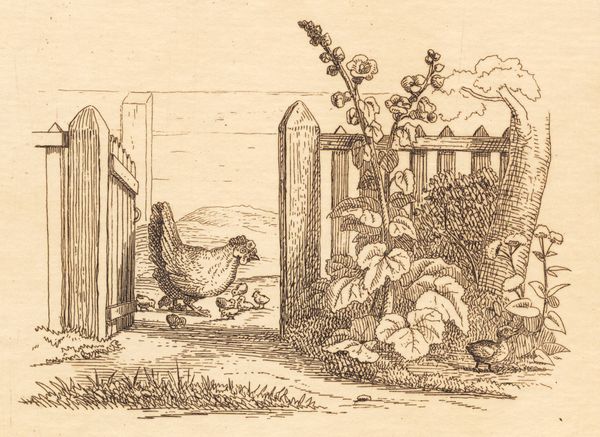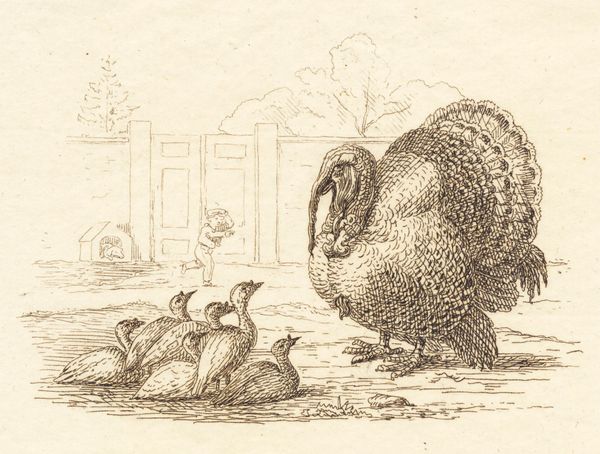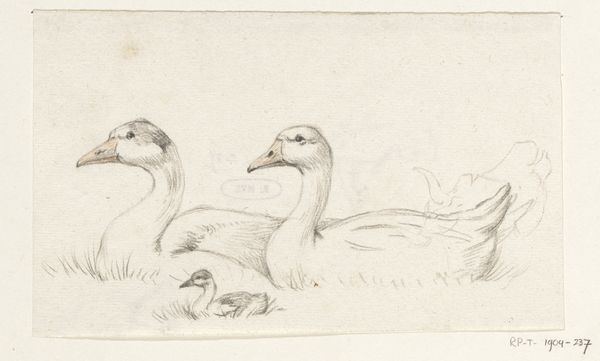
Illustration til "Halvhundrede Fabler for Børn" af Hey 1834
0:00
0:00
drawing, print, engraving
#
drawing
# print
#
landscape
#
romanticism
#
line
#
genre-painting
#
engraving
Dimensions: 99 mm (height) x 134 mm (width) (bladmaal)
Curator: Welcome! Here we have Martinus Rørbye’s "Illustration til 'Halvhundrede Fabler for Børn' af Hey," created in 1834. It’s a drawing and engraving, likely intended for print. Editor: My first thought is, it feels almost… timeless. There’s something so simple about the lines, and the composition directs your eye upward. A comforting sense of stillness emanates. Curator: It is interesting to situate Rørbye’s work within the burgeoning Romanticism movement and the socio-political climate of the Danish Golden Age, marked by both national pride and nascent liberal ideals. How might this seemingly innocuous illustration for children be read as a reflection of those tensions? Editor: Well, focusing on pure form, I am struck by the linear quality, the cross hatching defines shadow. The eye dances from the pigeons on the thatched roof to the dovecote to the child. The lack of strong value creates unity. Curator: Considering that Rørbye traveled extensively and depicted scenes from diverse cultures, one might see even in this small work a microcosm of cross-cultural dialogue. Is the child inviting the doves, negotiating the relationship with these animals or simply part of the fable narrative? And further more is there a fable lesson to be gleaned about how to address other cultures in 19th century Denmark? Editor: Perhaps! But even stripped of that, the visual language, the interplay of sharp, defined lines versus the softer texture implied by the thatched roof creates a kind of internal tension, a dynamism that elevates it. Curator: I'm inclined to read more in Rørbye's choice of subject. A child coaxing doves. Doves being symbolic of peace. His romantic bent focusing on the simple interactions we as people have with the world. It is simple and yet still resonant today as we also seek a better relationship with the natural world. Editor: An interesting proposition. For me the simple mastery of line and form speak to its intrinsic value. Curator: Whether considering the wider socio-political sphere of its origin or as a triumph of aesthetic representation, Rørbye's humble illustration continues to offer something. Editor: Indeed, it offers a lesson on the timeless power of simple composition.
Comments
No comments
Be the first to comment and join the conversation on the ultimate creative platform.
